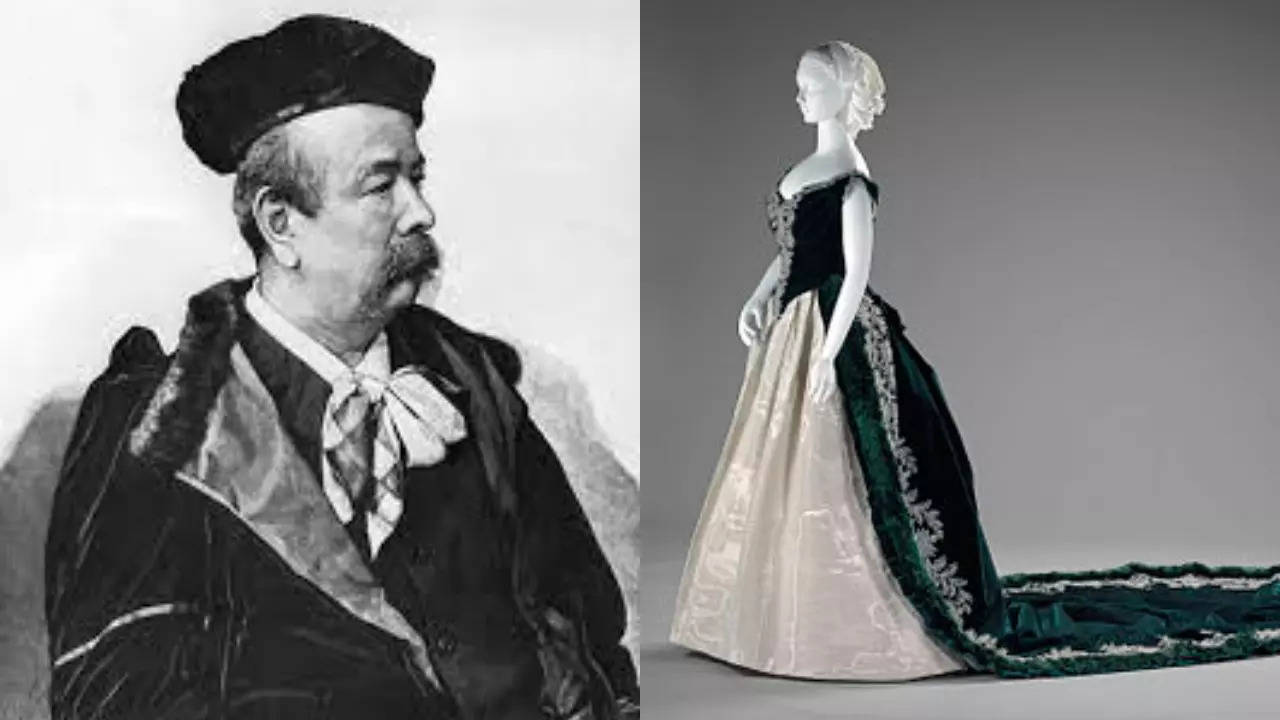Charles Frederick Worth: The man who invented fashion shows in 1850s – Times of India
Born in 1825 in Bourne, England, Worth initially pursued a career in drapery and textiles.However, his journey took a monumental turn when he moved to Paris in 1846. Paris, the epicenter of the fashion world, provided Worth with the perfect platform to showcase his creative brilliance. In 1858, he took the daring step of opening his own couture house, which marked the beginning of a new era in fashion history.
Worth’s profound innovation lay not only in his exquisite designs but also in his recognition of the importance of presentation. He understood that fashion was more than just garments; it was a statement, an art form, and a reflection of one’s identity. This insight led him to invent the concept of fashion shows – a means to exhibit his designs to a select audience, including aristocrats and royalty. These shows allowed Worth to narrate the story behind each creation, emphasizing the craftsmanship, fabrics, and artistic thought that went into his pieces. In doing so, he elevated fashion to a level of grandeur previously unseen.
The idea of fashion shows as we know them today traces its roots to Worth’s transformative approach. He moved away from the traditional practice of sending models individually to clients, opting instead for a centralized presentation. This not only saved time but also allowed him to captivate a larger audience simultaneously. His shows became the talk of the town, not only for the opulence of his designs but also for the theatrical flair he brought to each event.
Worth’s innovation did not stop at fashion shows. He is often credited with introducing several other groundbreaking concepts to the fashion industry. He was among the first to sew labels into his garments, marking them with his signature, which not only established his brand but also protected his designs from imitators. He recognized the importance of branding and exclusivity in fashion long before these concepts became ubiquitous.
Furthermore, Worth played a pivotal role in shaping the role of designers themselves. Prior to his time, dressmaking was considered a craft, and designers were often anonymous figures working behind the scenes. Worth, however, placed himself front and center, boldly putting his name on his creations and establishing the notion of the “celebrity designer.” This shift in perception laid the groundwork for the cult of personality that surrounds designers in today’s fashion industry.
Beyond his innovative ideas, Worth’s designs themselves were works of art. He introduced luxurious fabrics, intricate embroidery, and attention to detail that set a new standard for haute couture. His creations adorned the likes of Empress Eugénie, Queen Victoria, and countless other influential figures, solidifying his position as a pioneer in fashion.
Charles Frederick Worth’s legacy continues to reverberate through the fashion industry, shaping its very essence. The concept of fashion shows that he pioneered remains an integral part of the industry’s DNA, evolving with time to become larger-than-life spectacles that set trends and define cultural moments. His visionary approach to branding, celebrity designers, and the artistic narrative behind each collection remains influential even in the modern landscape of fashion.
Charles Frederick Worth’s impact on the fashion world is immeasurable. His invention of fashion shows was not merely a logistical innovation; it was a profound artistic statement that forever changed how we perceive and experience clothing. Worth’s legacy reminds us that fashion is not just about garments but a symphony of creativity, storytelling, and self-expression that continues to evolve with each passing era.
function loadGtagEvents(isGoogleCampaignActive) { if (!isGoogleCampaignActive) { return; } var id = document.getElementById('toi-plus-google-campaign'); if (id) { return; } (function(f, b, e, v, n, t, s) { t = b.createElement(e); t.async = !0; t.defer = !0; t.src = v; t.id = 'toi-plus-google-campaign'; s = b.getElementsByTagName(e)[0]; s.parentNode.insertBefore(t, s); })(f, b, e, 'https://www.googletagmanager.com/gtag/js?id=AW-877820074', n, t, s); };
window.TimesApps = window.TimesApps || {}; var TimesApps = window.TimesApps; TimesApps.toiPlusEvents = function(config) { var isConfigAvailable = "toiplus_site_settings" in f && "isFBCampaignActive" in f.toiplus_site_settings && "isGoogleCampaignActive" in f.toiplus_site_settings; var isPrimeUser = window.isPrime; if (isConfigAvailable && !isPrimeUser) { loadGtagEvents(f.toiplus_site_settings.isGoogleCampaignActive); loadFBEvents(f.toiplus_site_settings.isFBCampaignActive); } else { var JarvisUrl="https://jarvis.indiatimes.com/v1/feeds/toi_plus/site_settings/643526e21443833f0c454615?db_env=published"; window.getFromClient(JarvisUrl, function(config){ if (config) { loadGtagEvents(config?.isGoogleCampaignActive); loadFBEvents(config?.isFBCampaignActive); } }) } }; })( window, document, 'script', );
For all the latest lifestyle News Click Here


